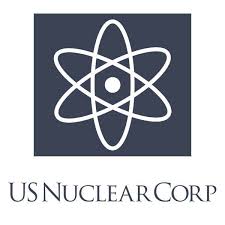Japan recently began releasing radioactive water from the Fukushima nuclear disaster into the Pacific Ocean. This prompted China to announce a ban on all Japanese seafood products due to concerns about radioactive contamination. They joined Hong Kong, Macau, and South Korea who also have banned seafood from the area around Fukushima. Many other countries have stepped up their inspection of fish and other food items from Japan. The concern over radioactively contaminated food and agricultural products has triggered a surge of interest in the U.S. Nuclear’s food contamination monitors which can measure whether food or liquid samples are safe or if there is any contamination present.
Japanese cuisine is very popular in China. The sector is valued at about twenty-five billion dollars. It included seven hundred eighty-nine thousand restaurants in 2022. Last year, China was also Japan’s top trading partner for seafood. It accounted for nine hundred forty-two million dollars-worth of seafood imports. Hong Kong was second at four hundred thirty-two million dollars. Restaurants and the fishing industry will be hit especially hard by food bans unless Japanese seafood can be proven to be safe. Hong Kong and Macau have issued a ban that covers Japanese seafood products from ten regions in and around Fukushima. South Korea recently issued a statement maintaining the ban on Fukushima fisheries and food products will continue until concerns have eased. Japanese seafood and products are also sent around the globe. When such bans or concerns are raised, it is important to both the exporter and importer to ensure that the product is safe and contamination free.
U.S. Nuclear’s most popular food contamination monitors include the Model FLG-9000 and SSS-22P. The FLG-9000 measures minute quantities of radioactive contamination in foods and other samples utilizing a large volume one quart scintillation detector and multichannel analyzer electronics for isotope identification and rapid processing of samples. The SSS-22P measures all liquid samples such as drinking water, sea water, sake or milk, for radioactive contamination down to the lowest levels possible for safety.
It is expected that it will require thirty plus years for Japan to release all the stored radioactive water. During that time, it will be extremely important to closely monitor all food and products from that area and surrounding countries.
The press release issued by U.S. Nuclear included “forward-looking statements” within the meaning of the safe harbor provisions of the United States Private Securities Litigation Reform Act of 1995. Actual results could differ from expectations, estimates and projections and, consequently, these forward-looking statements should not be relied upon as accurate predictions of future events. Words such as “expect,” “estimate,” “project,” “budget,” “forecast,” “anticipate,” “intend,” “plan,” “may,” “will,” “could,” “should,” “believes,” “predicts,” “potential,” “continue,” and similar expressions are intended to clearly identify such forward-looking statements. These forward-looking statements involve significant risks and uncertainties that may cause the actual results to differ materially from the expected results.
Investors interested in food and product monitoring can find additional information about U.S. Nuclear Corporation on the SEC website at http://www.sec.gov, or the company’s website at www.usnuclearcorp.com.




